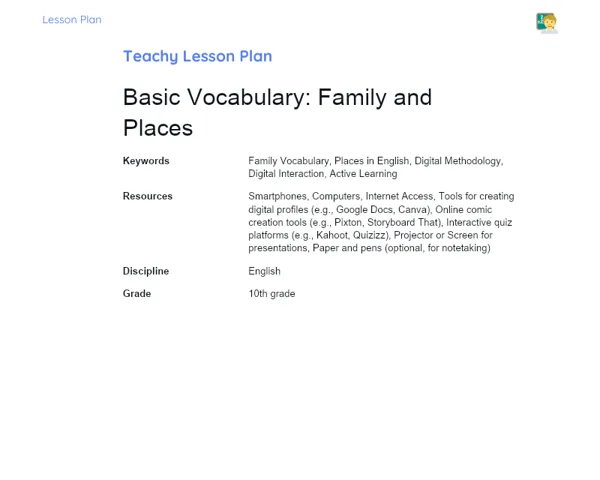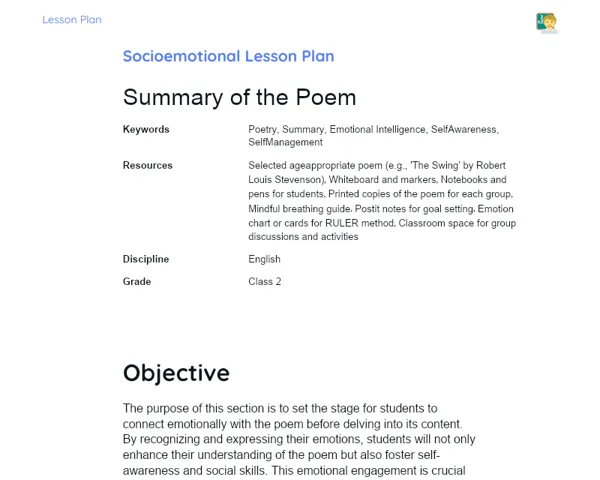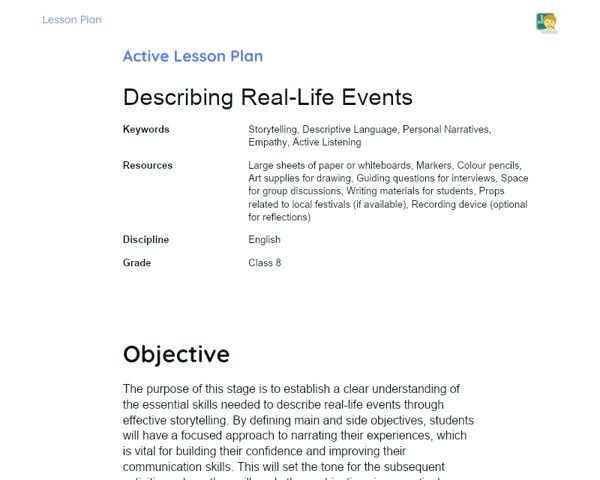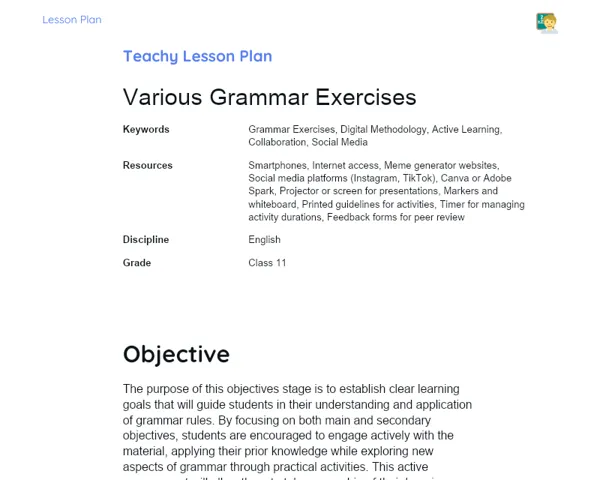Lesson Plan | Lesson Plan Tradisional | Cognates and False Friends
| Keywords | Cognates, False Friends, Understanding, Identification, Examples, Strategies, Misunderstandings, Proficiency, Communication, Reading, Context |
| Resources | Whiteboard, Markers, Projector, Presentation slides, List of cognates, List of 'false friends', Notebooks, Pens, Bilingual dictionaries |
Objectives
Duration: (10 - 15 minutes)
The aim of this stage in the lesson plan is to provide students with a clear understanding of what cognates and 'false friends' are, highlighting the significance of recognizing these terms in their English language journey. This will help prevent misunderstandings and enhance students' reading and comprehension skills.
Objectives Utama:
1. Understand the concept of cognates and 'false friends' in English.
2. Identify common examples of cognates and 'false friends' that can lead to confusion.
3. Distinguish between true cognates and 'false friends' based on their meanings in specific contexts.
Introduction
Duration: (10 - 15 minutes)
The aim of this stage in the lesson plan is to provide students with a clear understanding of what cognates and 'false friends' are, highlighting their importance for English learners. This understanding will help avoid misunderstandings and improve students' reading and comprehension abilities.
Did you know?
Did you know that some words in English and Hindi sound so similar they could be siblings? For instance, the word 'intelligent' in English means the same as 'buddhiman' in Hindi. But watch out for traps, like the word 'pretend', which in English means 'to act falsely' and not 'to intend'. Such differences can lead to amusing situations or even mix-ups in day-to-day conversations!
Contextualization
Begin the lesson by discussing that while learning a new language, we often come across words that look familiar and can aid in our understanding. These words are termed cognates. However, some words may appear alike but have entirely different meanings. These are referred to as 'false friends'. Inform students that today's focus will be on identifying these terms to clear up confusion and enhance their grasp of English.
Concepts
Duration: (40 - 50 minutes)
The objective of this stage in the lesson plan is to deepen students' knowledge of cognates and 'false friends', offering practical examples and strategies for correct identification and usage. This will aid in avoiding misunderstandings and enhancing communication accuracy in English.
Relevant Topics
1. Definition of Cognates: Explain that cognates are words with the same etymological background that bear similar spelling and meaning in two languages. For example, 'family' in English and 'parivaar' in Hindi. Illustrate how these words can ease the process of learning English.
2. Examples of True Cognates: Frequent examples of true cognates include: 'animal' (पशु), 'music' (संगीत), 'intelligent' (बुद्धिमान), 'color' (रंग). Explain that even with slight spelling variations, the meanings remain the same.
3. Definition of False Friends: Clarify that 'false friends' are words that appear similar in two languages but have divergent meanings, potentially leading to misunderstanding in language use.
4. Examples of False Friends: Common examples of 'false friends', include: 'actually' (in fact, not currently), 'pretend' (to fake, not to intend), 'fabric' (textile, not factory), 'push' (to shove, not to pull). Highlight the erroneous meanings students may assume due to similarities with Hindi.
5. Strategies for Identifying False Friends: Offer tips for students to identify and steer clear of 'false friends', such as: always checking the word's context, using bilingual dictionaries, and studying lists of prevalent 'false friends.'
To Reinforce Learning
1. List five true cognates that you know and explain the meaning of each one.
2. Explain the difference in meaning between the words 'pretend' in English and 'pretender' in Hindi.
3. Provide three examples of 'false friends' and illustrate how they may lead to misunderstandings.
Feedback
Duration: (20 - 25 minutes)
This stage in the lesson plan aims to review and reinforce students' learning about cognates and 'false friends', offering a chance for discussion and contemplation on the concepts covered. This will bolster students' comprehension and skill in accurately identifying and using these terms to avoid miscommunication.
Diskusi Concepts
1. Discussion of Questions Raised in the Development Stage: 2. 1. List five true cognates that you know and explain each meaning. 3. - Family (पारिवारिक): The term in English and Hindi has the same origin and signifies the group of connected individuals. 4. - Intelligent (बुद्धिमान): Both words derive from Latin roots and refer to the capability of understanding and learning. 5. - Color (रंग): Despite the spelling difference, both words refer to the visual attributes rooted in light. 6. - Animal (पशु): In both languages, it signifies a living being that is not a plant. 7. - Music (संगीत): The words originate from the same root and describe the art of creating harmonious sound. 8. 2. Explain the difference in meaning between 'pretend' in English and 'pretender' in Hindi. 9. - 'Pretend' in English means 'to fake', while 'pretender' in Hindi implies 'to intend to do something'. Misusing these words can lead to considerable confusion. 10. 3. Provide three examples of 'false friends' and explain how they can lead to misunderstandings. 11. - Actually (वास्तव में): This may be confused with 'वास्तविकता', but actually means 'in fact'. 12. - Fabric (कपड़ा): This may be confused with 'फैक्टरी', which refers to a factory. 13. - Push (धक्का देना): This can be mistaken for 'to pull' which is actually 'खींचना' in Hindi.
Engaging Students
1. Student Engagement: 2. 1. Can you identify additional true cognates beyond those we've discussed? 3. 2. How might 'false friends' impact communication in an actual conversation? 4. 3. Which strategies do you find most effective to steer clear of confusing 'false friends'? 5. 4. Has anyone faced a humorous or embarrassing moment due to a 'false friend'? Feel free to share with the class! 6. 5. Why is it critical to recognize the difference between cognates and 'false friends' to enhance our understanding and usage of English?
Conclusion
Duration: (10 - 15 minutes)
The aim of this stage is to revise and encapsulate the main points discussed throughout the lesson, reinforcing students' understanding of cognates and 'false friends'. This ensures that learners possess a clear, consolidated view of the material, facilitating the practical application of their learnings.
Summary
['Cognates are words that share the same etymological roots and have similar spellings and meanings in two languages.', "Examples of cognates include: 'family' (पारिवारिक), 'intelligent' (बुद्धिमान), 'color' (रंग), 'animal' (पशु), 'music' (संगीत).", "'False friends' are terms that may seem alike in two languages but possess differing meanings.", "Examples of 'false friends' include: 'actually' (वास्तव में), 'pretend' (धोखा देना), 'fabric' (कपड़ा), 'push' (धक्का देना).", "Strategies for identifying 'false friends' include checking the word's context, utilizing bilingual dictionaries, and studying lists of common 'false friends'."]
Connection
The lesson successfully merged theory with practice by providing clear definitions and examples of cognates and 'false friends', followed by exercises for students to identify and differentiate these words. This enabled them to apply theoretical concepts in real-life communication scenarios in English.
Theme Relevance
Grasping cognates and 'false friends' is vital to circumvent misunderstandings in English communication. For instance, knowing that 'actually' does not equate to 'वास्तविकता' can avert confusion in discussions or readings. Furthermore, understanding these terms promotes language acquisition and fluency, streamlining the learning journey and reducing frustration.



